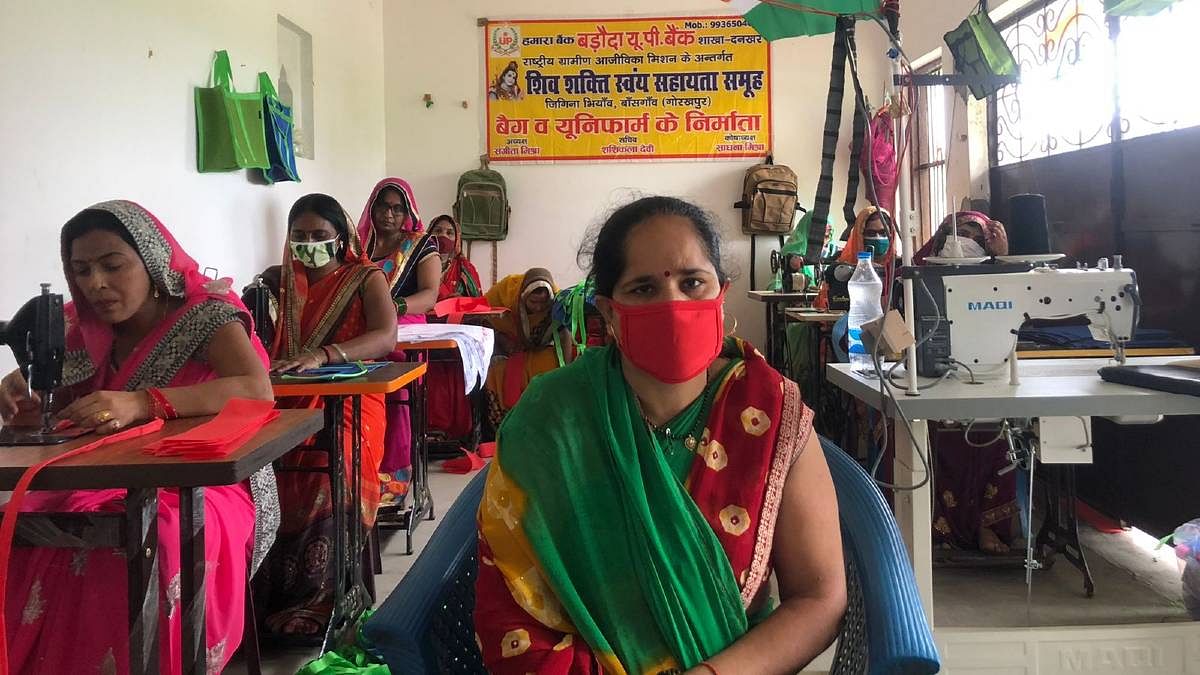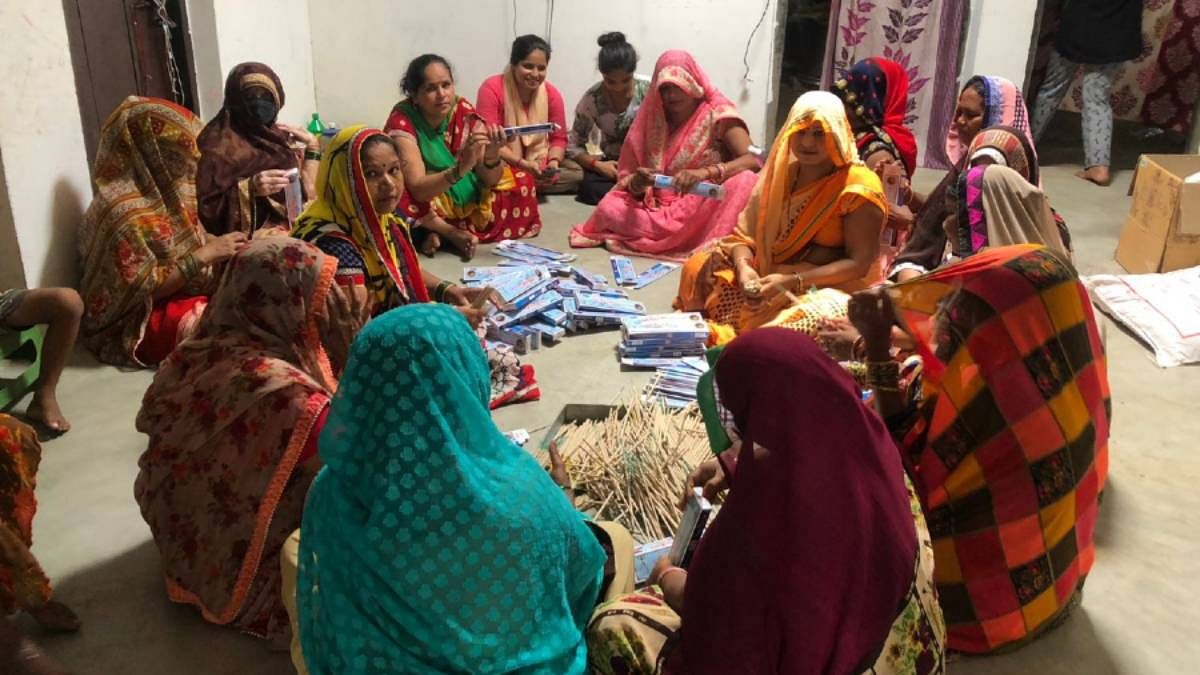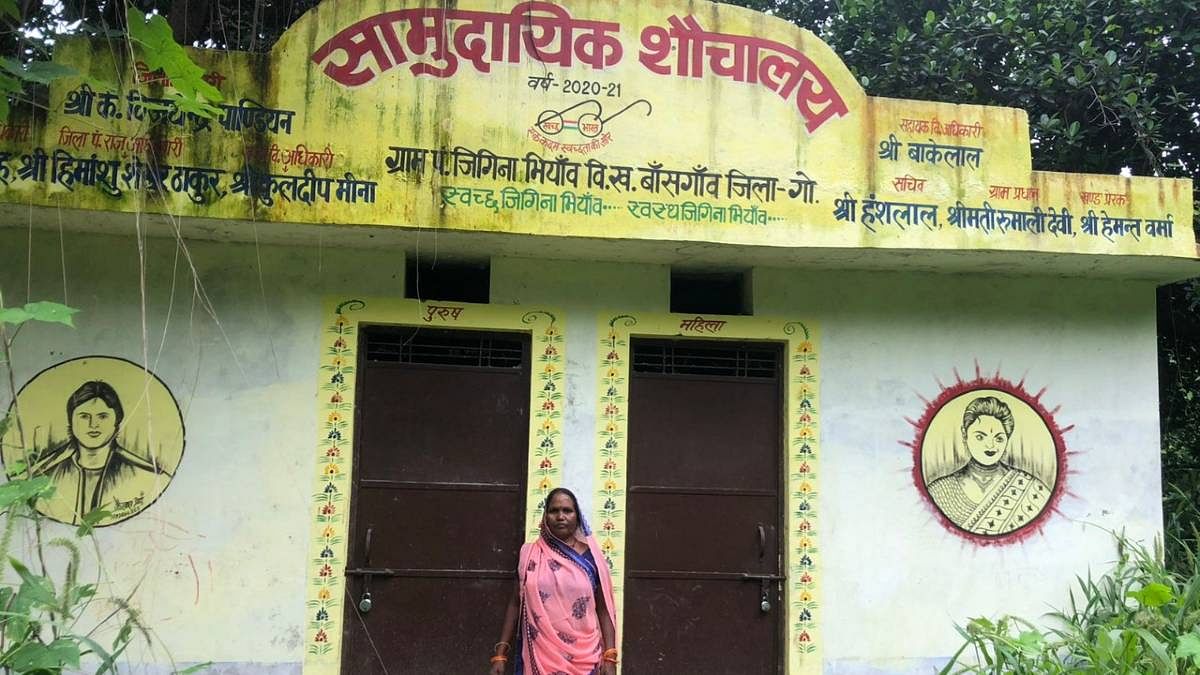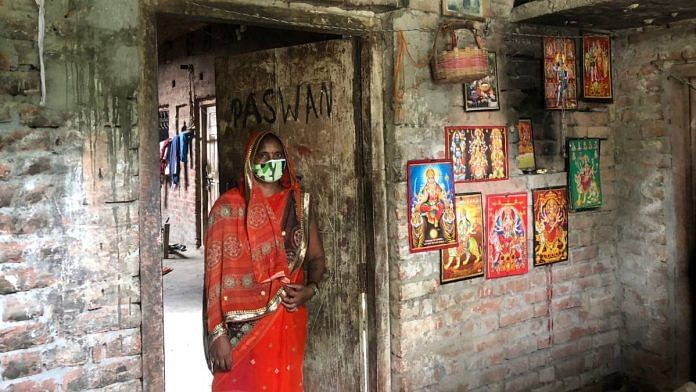Gorakhpur: When 38-year-old Indravati Devi’s husband Rajesh Paswan, a daily-wage labourer in Mumbai, lost his means of livelihood during the nation-wide Covid lockdown in April last year and returned to his village in UP’s Gorakhpur district, he had no idea how to continue supporting his family.
Indravati, a mother of two, was especially worried about her children. Her son and daughter are students in a government school, studying in Class 8 and Class 5, respectively.
“My husband took a seven-day journey to return home. At times he managed to hitch a ride on a truck, on some days he walked bare feet,” recalled Indravati.
But all that Indravati could think of was how were they to survive the coming days. For the past 10 years, Rajesh had managed to find work in Mumbai. Earning Rs 300-400 daily, he would send home about Rs 4,000-5,000 every month, after meeting his own expenses. Indravati, who has had no formal education, had never seen herself in the role of the family breadwinner.
But a self-help group (SHG) that Indravati had joined in 2015, with the aim of adding what little she could to the family income, became their lifeline, helping the family of four stay afloat in the past year-and-a-half, while two lockdowns spelt devastation for many migrant workers and their families.
“When I joined the group, I had thought that even if I make Rs 500-1,000 every month, it would be better than borrowing from the moneylender,” said Indravati. She would work for about four-five hours every day after finishing her household chores, between 10 am and 2 pm, making cloth bags.
Although the earning was better than she had expected — she earned Rs 4,000-5,000 per month during 2019, she said — it was during the lockdown that the SHG showed its true potential. Working for nearly eight hours at times, making face masks, PPE kits and sanitisers that were sourced by the government, Indravati said she started earning up to Rs 9,000-10,000 a month.
In recent months, Indravati is not the only one in her village — Gorakhpur’s Jigina Bhion — to have benefitted from the scheme that operates under the Centre’s National Rural Livelihood Mission (NRLM) and aim to empower the rural poor “enabling them to increase household income through sustainable livelihood enhancements and improved access to financial services”. It is primarily targetted at women.
The scheme has been attracting a growing number of women in Jigina Bhion during the pandemic as traditional livelihoods are impacted by lockdowns, especially for those in the unorganised workforce.
Also read: ‘Don’t want to live like a victim’ — How a women’s adalat in UP is empowering survivors of abuse
Creating livelihood options — how SHGs operate
It was in the nineties that self-help groups started being formed in states, supported by the National Bank for Agricultural & Rural Development (NABARD). In 1999, the Centre started a formal programme of building SHGs under the Swarnajayanti Gram Swarozgar Yojana. The current scheme of SHGs under the Ministry of Rural Development was launched in 2011 as ‘Aajeevika NRLM‘. It was renamed the Deendayal Antyodaya Yojana (DAY-NRLM) in 2015 and is also supported by the World Bank.
Under the scheme, an internal community resource person (ICRP) identifies poor women in a village and mobilises them to form an SHG. After a group is formed — each group has 10-12 members — they are given an initial fund of Rs 2,500 to start a business, such as making bags, incense sticks, which are then marketed. The groups also receive Rs 15,000 under the NRLM allocation. This is a grant, which the SHGs do not need to return.
Six months after the formation of the group, it also becomes eligible for bank loans. Once the group is linked to a bank and gets an account, it receives its first credit amount under the scheme of Rs 1.50 lakh. The two subsequent credits of Rs 3 lakh and 5 lakh respectively are dependent on timely repayment and the performance of the group.
The earnings are divided among the women in the group.

“SHGs form a system of mutual support for women. This not only helps in their empowerment, improving their savings and reducing poverty, but also plays a crucial role in the democratisation of the village institution and participatory democracy at the village level,” said Gorakhpur’s chief development officer (CDO), Indrajit Singh.
“Many SHG-empowered women contested elections for village pradhans in Gorakhpur in 2021.”
All SHGs in one panchayat form a village organisation (VO). A group of four village organisatons forms a cluster level federation (CLF). The manpower for the scheme includes the district commissioner, the district mission manager, block mission managers, cluster co-ordinators, samuh sakhis (who works as links between the district administration and the SHGs) and bank sakhis (a link between banks and SHGs).
According to the data available on the NRLM website, till date 7,74,57,440 women across India have been covered under the scheme. The number for UP is 53,07,567. In Gorakhpur, 1,50,730 women are covered under the scheme, according to NRLM data.

In Jigina Bhion, the group names have a touch of the divine — Shiv Shakti, Bholenath, Parvati, Radha Vridha, Shiv Guru — and there are a total of 18 functional SGHs. According to district data, so far, 133 women are covered under SHGs in the village that has a population of around 2,000.
The district administration has outsourced government-sanctioned jobs under various schemes to women in the villages who are part of the SHGs.
“We have roped in women from SHGs as MGNREGA mates (supervisor), community toilet caretakers, PDS ration dealers, Poshahar distributors, CIB supplier (Citizen information board),” said CDO Singh.
In Jigina Bhion village, for example, 45-year-old Fulwasi, a member of Jai Maa Vaishno SHG, has been given the job of community toilet caretaker on a rotation basis, with a monthly earning of Rs 6,000. Another woman, Pratima Tiwari, a member of Mahakal SHG, has been given the post of PDS ration dealer. The posts of Poshahar and CIB supplier, have been allotted to Shiv Shakti SHG and Ambe SHG, respectively.
Their assured income has drawn more women to the SHG scheme.
Also read: How this remote, backward UP district is fighting malnutrition amid Covid pandemic
Self-help during the pandemic
Paswan had always been encouraging of his wife’s efforts to add to the family income and never stopped her from joining the SHG, said Indravati. The true benefit of it was felt by them — the family lives in one-room of a house occupied by a large, extended family — during the pandemic.
A member of the Shiv Shakti SHG, Indravati’s group works in a rented room in the village, for which they pay the landlord Rs 1,000. While earlier the women would sell what they made to private buyers — though the government too gives SHGs tenders for things like school uniforms on a requirement basis — during the pandemic, the government has been continuously buying masks, PPE kits, and sanitisers from SHGs, which has given them a more assured source of income.
According to government data, during the pandemic, SHGs all over the country have produced 16,89,27,854 masks, 5,29,741 PPE kits, 5,13,059 sanitisers, and operated 1,22,682 community kitchens.

The money being made by Indravati, Fulwasi, Pratima and others like them in the village, has encouraged more women to be a part of the SHGs. A month ago, Jigina Bhion Samuh Sakhi Sarita Tiwari said she was approached by 30-year-old Seema Sharma, wife of the village barber, to include her in the SHGs.
“People had stopped cutting their hair during the pandemic and the family had no income,” said Sarita. Sarita helped Seema form a new group, Deepak, with a few others from the village.
But while the demand for inclusion has gone up during the pandemic, the reach of the scheme has suffered because of the lockdowns and resultant difficulties faced by the ICRP in reaching the villagers.
In 2019-20 Gorakhpur had met its target of setting up 4,200 new SHGs, according to the district administration. In 2020-21, however, it could set up only 3,000 new SHGs out of the given target of 5,000. In 2021-22, it has so far set up only 1,600 SHGs; the target is 4,142.
There is also a problem of manpower shortage. Gorakhpur requires seven block mission managers for the scheme, but currently has only three-four, according to the district administration.
In July, Rural Development Minister Giriraj Singh told Parliament that loans worth over 1.12 lakh crore are outstanding with self-help groups across the country as of June 2021, with a 97.17 per cent loan repayment rate. But banks have flagged the issue of non-payment of loans by SHGs in many districts during the pandemic.
In Gorakhpur, according to data shared by the district administration, 75 cases of non-performing assets were flagged by banks in the district in 2019-20. During 2020-21 the number increased to 152 and till July this year, a total number of 142 such cases have been reported.
Indravati, and others who have benefitted from the scheme, however, will vouch for the scheme’s success. “Agar ye samuh nahin hota, toh hum bhookhe mar jate (If the SHG had not been there, we would have starved to death),” said Indravati. Behind her, others of her Shiv Shakti SHG nod in agreement.
(Edited by Poulomi Banerjee)
Also read: With no routine check-ups or ASHA workers, UP’s Chitrakoot sees rise in home births during Covid






